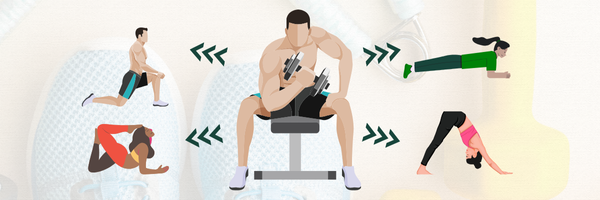
By Nicholas Mortensen, PhD, CSCS
Setting short- and long-term performance goals is a foundation for coaches, athletes, and teams throughout the year. It is a way to measure progress through regular evaluations and adjust training and tactics as needed. But sometimes, no matter how hard an individual tries, progress toward a goal may slow down or even remain stable, and this, for some people, can be seen as a failure, which can affect physical and mental performance with training and competitions. Instead of focusing on what is going wrong and why a goal was not accomplished, perspectives should shift towards complementary goals.
These types of goals emphasize other positive outcomes that can also improve aspects of the primary ones you were aiming for. Here are a few examples:
- Weight Loss: When working with clients, one of the most common goals is to achieve a certain weight loss number or weigh a certain amount on the scale. This can be a good goal to achieve, but instead of just focusing on weight loss, also focus on being consistent with your exercise routine, getting in a goal amount of steps per day in addition to your regular training sessions, and/ or eating an adequate amount of fruits and vegetables per day. Also, you can evaluate how much energy you have compared to when you started, along with how your clothes fit differently as motivational factors.
- Improving Vertical Jumping Ability: Jumping as high as possible is a staple for many sports and activities, so athletes rank this high on their athletic attributes list. Improving your lower body strength and power through numerous resistance training techniques and programs are excellent complementary methods, especially when your progress on these specific exercises improves. In addition, improving reaction time and jumping movements that work in other directions, such as horizontally and laterally, can emphasize the neuromuscular response time and ability to move quickly.
- Improving Sprinting Ability: Here is another staple in athletic performance, but just running as fast as possible over and over again for a specific distance may not be as effective over time. Instead, focus on other sprinting/agility drills in similar and multiple directions, shorter or longer distances, work on reaction capabilities, how quickly you initiate a sprint, and deceleration abilities.
Complementary goals may seem obvious at times, especially in team sports where athletes engage in various modalities to enhance their performance. However, taking the focus off the primary goal for a while and focusing on other aspects that still improve athletic performance and complement your primary objectives can serve as both a physical and mental reset. This can be beneficial in numerous ways, both with training and competition, and then athletes can go back to enhancing their original goals with new perspectives.
All training goals can be measured objectively, subjectively, or both. Regular evaluations are necessary to ensure proper progress when preparing for the key physical and mental attributes required to be successful in competition. Recognizing when a training plan is working or needs slight adjustments is the key to proper athlete development, even if the primary focus needs to stay out of the spotlight from time to time.
About the Author

Dr. Nick Mortensen is an assistant professor in the Department of Kinesiology, focusing on teaching strength and conditioning courses for SCLA graduate programs. His research broadly focuses on improving human performance in various exercise and sports modes, and how to modify programming appropriately to accommodate the needs of athletes, general and specific populations.